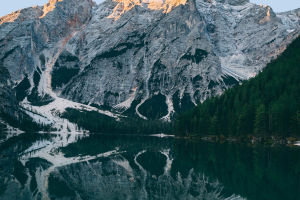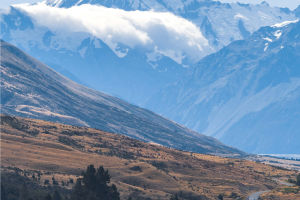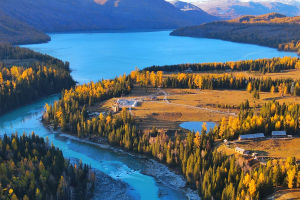Mount Cook is an awe-inspiring mountain range located on the South Island of New Zealand, and it is a UNESCO World Heritage Site.
The mountain range's highest peak, Mount Cook, is covered in snow and ice all year round, and the valleys of the mountains are home to many glaciers.
As the glaciers move, debris from the mountains slides down, creating numerous cracks and large blocks of ice on the surface of the glaciers, making them even more dazzling as the sun shines.
Mount Cook is named in honor of Captain Cook, the first Englishman to discover the east coast of Australia and New Zealand in the southern hemisphere. The mountain range also has another title: Aoraki, which is the name of the local aboriginal people and means "the top of the clouds."
Mount Cook National Park, also known as Aoraki National Park, offers alpine beauty in its purest form: towering peaks, majestic glaciers, and open ski slopes.
Mount Cook is a paradise for hikers and climbers, and visitors can appreciate the mountain's beauty through aerial activities or low-intensity trails with magnificent views.
Despite Aoraki Mount Cook having 23 peaks over 3,000 meters above sea level, it is easy to access the mountain. The village of Aoraki/Mt. Cook is accessible along National Highway 80, located on the shores of scenic Lake Pukaki, which is the ideal base camp for alpine activities.
It is away from the distractions of city lights and offers a magnificent and bright starry sky. Much of New Zealand's only International Dark Sky Reserve is located within Aoraki Mount Cook National Park.
For many climbers, this is the best climbing region in Australasia. Even less experienced adventurers will find much to enjoy from alpine walks, including beautiful alpine lakes, large meadows, and spectacular glacier views. Lucky visitors may encounter the comical sheep-pecking parrot (mountain parrot).
The huge Tasman Glacier is 27 kilometers long and offers a breathtaking view. It runs gently along the sides of the valley, and small ski planes and helicopters can land here. The dreamy milky white lakes are a feature of Mount Cook National Park, and the opaque color is due to the rocky powder formed by glacial grinding floating in the water.
The summit of Mount Cook is covered with ice all year round, and the Tasman Glacier in the valley of the mountains is about 27 km long, with an average width of 2 km and a thickness of 600 m.
The view is spectacular, and it is the longest glacier in New Zealand. There are roads and hiking trails to approach this glacier.
The bus will take you to the Tasman Valley, a 30-minute hike through the national park, through the ice piles of rocks, aboard a specially built glacier boat, to enjoy the endless scenery, the strange shapes of the caps and peaks of the Tasman Glacier from a safe distance, and the opportunity to taste ice crystals that are 300-500 years old.
The full tour lasts approximately 25 hours, including a 45-minute to one-hour tour of the glacier lake.


